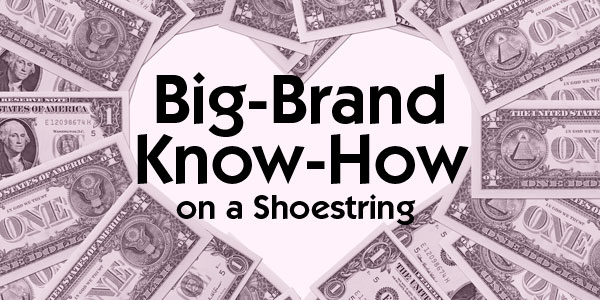
Building a Brand with Big-Brand Know-How on a Shoestring and Doing More With Less
Small and medium business owners often wish that they had the marketing budgets and expertise that big brands enjoy. It can sometimes seem as if business success would be so much easier with the money and knowledge of a large company. However, that would be a mistake because SME/SMB businesses are highly flexible with a customer connectivity big business can’t emulate to the same effect.
Related: How Healthy Is Your Brand? 7 Vital Signs to Measure Today Using a Brand Audit Health Check
In reality, big brands have invested so much in acquiring marketing expertise that the benefits can be emulated by smaller businesses too so here we’re sharing some of the insider secrets from big-brand know-how.
SME/SMB companies can piggyback on the branding and marketing lessons of big brands using an agile branding strategy mindset so they can do things effectively with more modest budgets. By leveraging brand building tools, systems together with all the capabilities online offers, the playing field is levelled. Plus, smaller brands actually enjoy many advantages over big ones when it comes to the proximity and style of their relationship with customers.
Here we’re sharing some easily accessible and important brand building strategies to grow your business so you can apply them with modest resources to increase your profits using a big-brand mentality.
7 Big-Brand Know-How Tips to Help You Increase Your Profits Without a Big Budget
1. Identify Your Target Customers Clearly Using Big-Brand Know-How
Identifying and clearly mapping your ideal customers is critical to your business because it enables you to focus your brand resources much more effectively both in terms of product development and brand communications strategy. By focusing on the right target customers, you also avoid wasting resources on unprofitable customers so improving the overall performance of your business.
In the early life cycle of a business it‘s understandable why promoters tend to indiscriminately chase or endeavour to service any customer at that comes their way.
Covering costs, creating cash flow and building viability are critical and it can seem at times as if any money that comes through the door can help achieve those objectives.
But in reality, more precise customer targeting is a far more efficient use of resources, and leads to dramatically better results longer term. Even in the short term, the wrong sorts of customers may pay but can distract your efforts at a critical time in your development or use up too many resources resulting in a very poor profit margin.
Large businesses map their market, then build detailed Purchaser Personas to identify exactly who they want to target and why. SME/SMB businesses can easily apply the same methodology in their branding strategy too. This is so important it’s a key part of our Brand Building Blueprint™ Masterminds and when working with inhouse client leadership teams as part of our Brand Building Blueprint™ Intensives.
Related: Increase Your Sales Using Buyer Personas, Your Guide to Understanding and Targeting Your Ideal Customers
One helpful place to start, is to look back through your recent customer list and identify which ones were the most successful. Who was happiest with your service, which ones were the most profitable, who were the most likely to come back again or recommend you?
From this you can already get a good picture of what sorts of customers are a good fit for your business. You can then evaluate if that will be true in the future. If you’re aiming to change the business direction or pivot then your Purchaser Personas or customer profiles will need to be mapped out again so you can target them effectively.
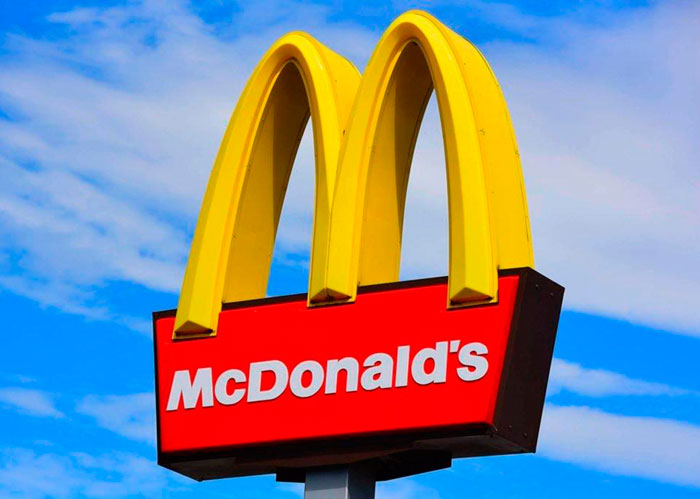
©McDonald’s, Image via Reader’s Digest
An interesting case study of the importance big businesses place on customer targeting is the fast food chain McDonald’s. Whereas many companies organize their marketing by product line or territory, McDonald’s actually organized its marketing by customer segment. See the video here.
We know that sometimes it’s a struggle to build a brand strategy that really engages your ideal customers effectively so we’ve developed three different ways of working with us to help you build your brand, depending on your preferences, so if you’d like us to:
- Build your brand for you – find out more here or get in touch [email protected] or ring +353 1 8322724
- Empower you to build your brand – check out the Persona Brand Building Blueprint™ Mastermind here. This is a two-day intensive where you work on your brand with us codifying and mapping out your brand strategy for business growth. Alternatively, join our half-day Branding Accelerator Masterclass for a fast-injection of brand building essentials. Ask about our Personal and Corporate Leadership Brand Alignment Masterclass
- Want a DIY solution? check out our how to build a brand eprogramme here and our how to audit your brand yourself eprogramme here
2. Ruthlessly Optimise Your Product or Service Range Using Big-Brand Know-How
Every additional product or service line you carry brings complexity. But many entrepreneurs worry that if they do not offer specific products or services, they will lose some crucial customer or contract.
It’s like when you go into your local hardware shop and they don’t have a particular item you want. Often, customers will simply ask that the item be stocked and expect that it will be there the next time they visit. But the hardware store owner may be left with most of a box of that product sitting gathering dust on a shelf and tying up capital for years to come.
There are some core “make or break” lines, but big businesses tend to be ruthless about having as small a range as possible to meet their commercial goals. They recognize that most revenue is generated by a few core offerings within their total range, and the rest add a lot of noise and strain without necessarily helping the business profitability much.
Evaluating your range of products or services, optimizing them for profitability and how you structure the relationship between them (also known as brand architecture) is an essential factor in underpinning your commercial success. Big businesses typically conduct regular range reviews and cut out products or services whose incremental financial return does not justify the extra resources required to market and sell them profitably.
This strategy is important for small businesses too. In fact, having a streamlined range can be additionally beneficial in the early days of building a brand because it helps potential consumers understand your proposition more clearly. In a B2B context, this can mean whittling individualized customer options down into a streamlined menu of options.
A lot of people look to Apple as a thought leader in branding and marketing. But what they might not know is the story of how Apple needed to work on its own range, with a simple product matrix strategy. When Steve Jobs came back to Apple, he asked how they could sell the range to customers. When he couldn’t even understand the range he decided instead to focus on four great products. That’s right, the whole success of today’s Apple was built on an approach of focusing in on just four core products. Watch Steve Jobs explain how it happened in this video.
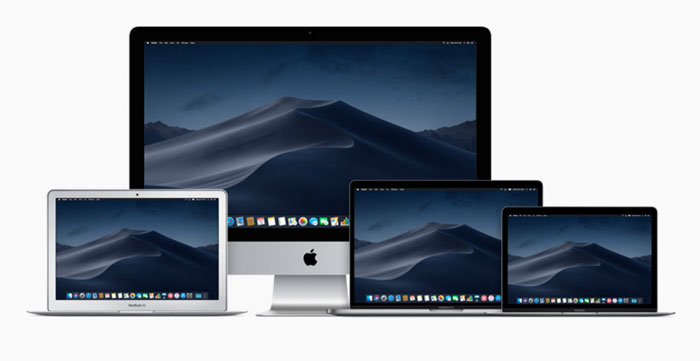
Image via ©Apple
Related: How Apple Does It, Five Tips for Getting Your $1Tn Brand Personality Right
3. Identify Your Unique Brand Positioning and Proposition Using Big-Brand Know-How
If your brand does not stand out from competitors, there is no particular reason for customers to buy it so they’ll likely default to price based decisions — the cheapest. Big brands understand this, which is why they work on points of differentiation, real and perceived. These can be everything from patented ingredients to a distinctive brand tone of voice.
Differentiation and strong brand positioning is an essential part of your brand strategy if you want to achieve higher margins and increased sales. Without it, you’ll spend your time competing on price alone which is a race to the bottom — unless your business model is like that of Ryanair. For that fight, you need very deep pockets, a resource drain which most growing companies prefer to avoid.
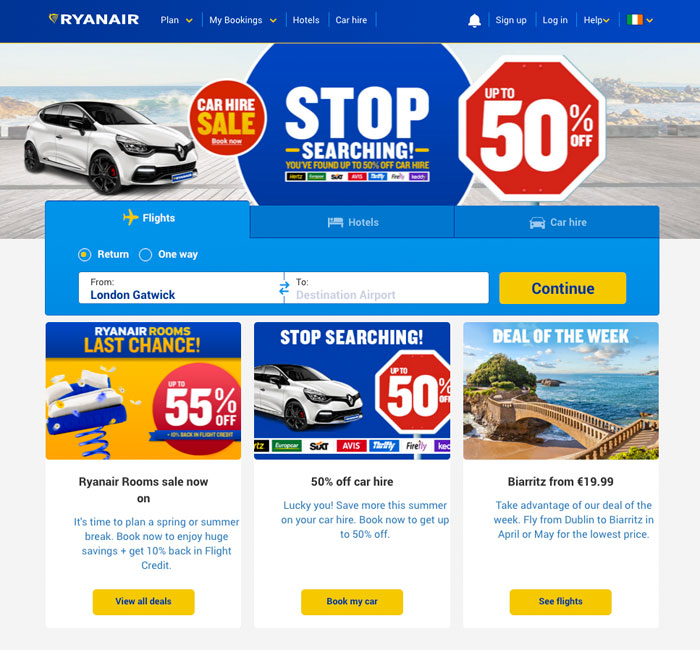
Image via©Ryanair
Related: How to Use Brand Positioning to Build Brand Impact in an Overcrowded Market
SME/SMB businesses can use the founder or owner as a point of differentiation more easily than a large business. It can become a core part of your brand positioning. The key thing is that you do need something to differentiate you.
This sort of expertise is valued by customers and often seems more credible coming from a company small enough that it still feels like there are ‘ordinary everyday people’ behind it.
For example, the British building tools and accessories company Screwfix has managed to stand out in the online market by offering professional advice and products to retail customers.
Indeed it has done so well online that it has now branched into bricks and mortar shops. A quick look at this video below shows why DIY customers tackling home improvement projects alone value the sort of detailed advice they receive from Screwfix so in turn helping the brand build its brand equity overall.
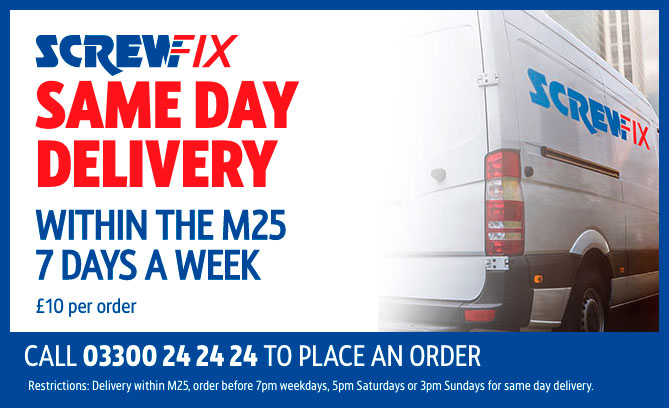
Image via ©Screwfix
Related: Boring Brand? How To Create a Unique Brand and Market Positioning
Are you a business leader, manager or entrepreneur who wants to re-evaluate or build your brand strategy so you can increase your sales? Are you curious about how to build or scale a highly successful standout brand? Join one of our branding workshops because they empower you to build your brand, enhance customer experience, expand your market impact and create higher perceived value so you can command a premium.
In fact, the Persona Brand Building Blueprint™ Mastermind is all about fast-tracking you, your brand and your business through the brand building, brand strategy process using big-brand know-how with proven agile branding systems that get results so you can grow your business faster and more effectively.
If you want a tailor-made solution specifically for your brand then we also provide inhouse bespoke Persona Brand Building Blueprint™ Intensives working with you and your team so you can grow your business faster and more profitably. Contact us to discover more [email protected] or +353 1 8322724
4. Develop Your Brand Story Using Big-Brand Know-How
Brand stories are a personable way of communication your unique proposition in a way which appeals to your target customers. They are not just popular with large lifestyle brands – even companies in tough industries like mining and construction often use brand stories as a way to help communicate their brand offering. Mining giant BHP’s “Think Big” brand story, for example, has helped deflect attention from operational problems.
Related: Brand Stories, 5 Compelling Examples That Sell Themselves
Smaller brands often have great stories about how and why they came into existence. However, owners often don’t know how to unlock the potential power of a strong, compelling brand story to capture their ideal customers’ attention and harness their interest long term.
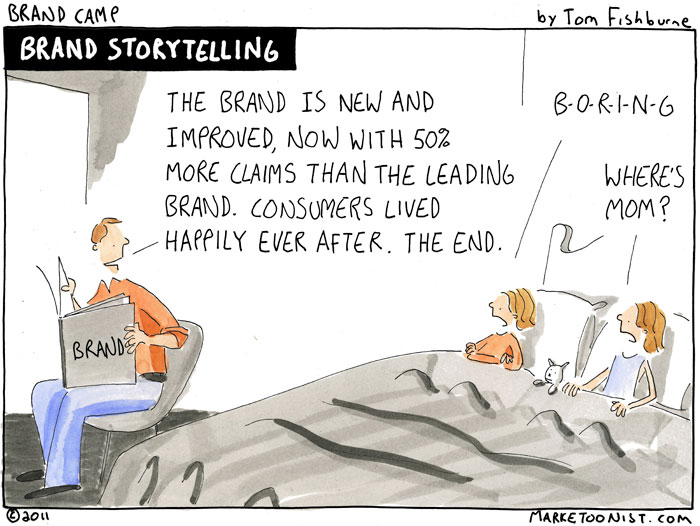
When done well, even though a story can be simple, it’s an effective way to build a distinctive and highly differentiated proposition and so create a strong connection with your target customer.
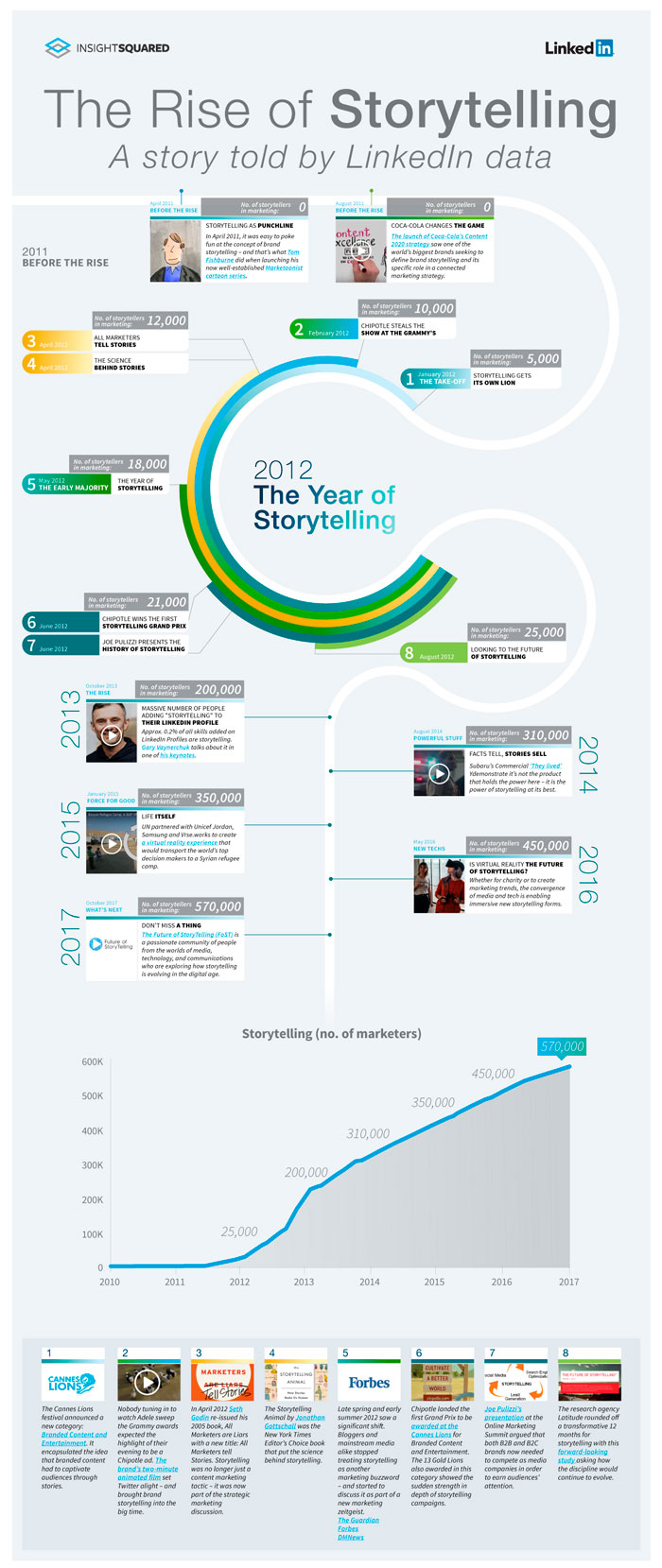
Image via Linkedin
For example, the crisp brand Jackpots are made by a family farm in Colchester, Essex. The potatoes are grown on the farm and the crisps are hand cooked there. In itself, this is unremarkable. But by telling the story on the brand packaging, complete with photos of the family members and the production process, the brand becomes more personally engaging.
Related: Family Business Branding and The Secret Drivers to Brand Success
It also helps to build an image of quality based on the perception of a family business, and commitment to the product. The brand packaging is a key part of the brand collateral and fundamentally underpins strong sales, so using it as a free billboard for the brand story is a very smart, cost effective way of using a brand story to build brand appeal.
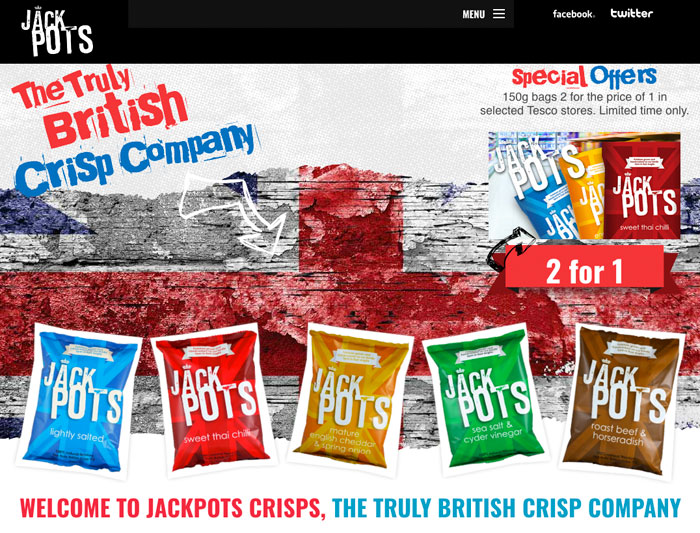
Image via Twitter © Jack Pots
Related: Brand Stories, 5 Compelling Examples That Sell Themselves (Part 2)
On a bigger scale, storytelling is also used by drinks behemoth Coca-Cola, as shown in this video, and it was Coca-Cola’s use of storytelling which kickstarted a massive rise in the use of brand storytelling. You can read all about that here.
Related: Brand Stories, Critical to Your Brand Growth Strategy
Marketing guru Seth Godin also has some helpful pointers on how businesses of any size can use their brand story to help their brand building and marketing, in this video.
5. Brand Consistency is Essential to Your Success in Your Brand Strategy
If you look at large brands, you will find that they ensure their brands appear consistent. They invest a lot of money and effort in communicating the same key elements of their brand, across all media both on and offline.
The reason they do this is because brand consistency builds and underpins trust. Without trust customers do not buy so this principle is critical for all businesses of any size — and frequently one of the biggest failings in SMEs/SMBs because they don’t realise how important consistency is to their brand and business success.
Having identified the best rendition or profile of their brand, large businesses then maximize their return on investment by ensuring that everything they do works towards building consistency.
SME/SMB brands can mimic this behaviour. In fact, for smaller brands, it is often easier to achieve consistency than for very large brands. Even if you feel that your brand is fairly basic, be consistent and stick with what you have.
Make sure that everything from your logo to letterhead to website, videos, messaging, language and imagery used follows the same brand guidelines.
Consider as a case study the high street pharmacist Boots. Their key visual elements and brand proposition has remained consistent over decades, as you can see from how recognizable it is even in this decades old commercial.
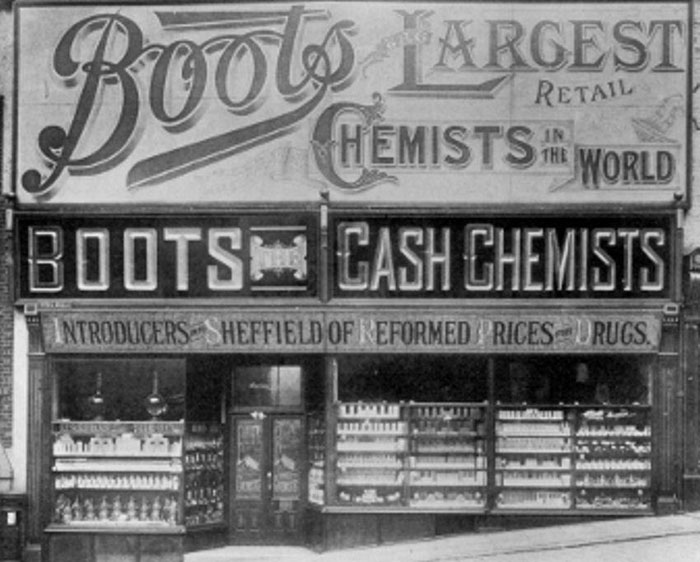
Image via Pinterest ©Boots Chemists
6. Build a Brand Communications Strategy and Deploy it to Plan Consistently Using Big-Brand Know-How
Large businesses typically devote significant effort to developing their branding strategy and marketing plans for the coming year or longer. They have a strategic plan which projects into the future, against which they then deliver.
SME/SMB businesses often don’t diligently apply their marketing plan (if they have one) unless there is a dip in sales and then they consider under duress how to get them back up.
Mapping out a forward-looking quarterly and annual brand strategy and marketing plan shifts from reactive, tactical marketing to a more strategic approach which empowers you to build your brand consistently over the long-term — the same way that bigger businesses do.
Brand Strategy: 6 Tips for Building Your Profit Growth Plan
If you’d like to discover more about building and maintaining a thriving, high performing, highly profitable standout brand, then get in touch because we’d love to help you make your brand and business into a profit powerhouse.
- Schedule an appointment — we can meet in person or online
- Allow us to create a customised plan for you
- Let’s implement the plan together
- Contact us [email protected] or ring +353 1 8322724 (GMT Dublin/London 9:00 – 17:30 weekdays)
Lorraine Carter is a branding expert and international speaker delivering talks that inspire and motivate along with masterclasses and workshops that inform and support transformational outcomes fast, and consultancy expertise that solves problems so you can outshine, outperform and leave your competitors way behind.
7. Leverage Your Customer Proximity Using Big-Brand Know-How
Large businesses spend a lot of money and effort listening to their target customers to understand more about what they need. Some run “customer closeness” programmes whereby staff spend time in the field to hear first hand what their users think of them.
SME/SMB businesses are often much closer to their customers compared to enterprise organization so fortunately, they don’t need the same level of investment to create or nurture that proximity.
Listening to your customers and incorporating their feedback and suggestions into your business planning is a simple yet very powerful way to ensure the business delivers more on target to meet commercial objectives.
Related: The Magic Words, 7 Ways to Appreciate Your Customers
A case study for some easy inspiration is consumer goods giant Unilever’s customer insights programme. This video below explains how executives from the company, which owns brands like Dove and Marmite, spend time in the real world with their consumers, learning about their products and more.
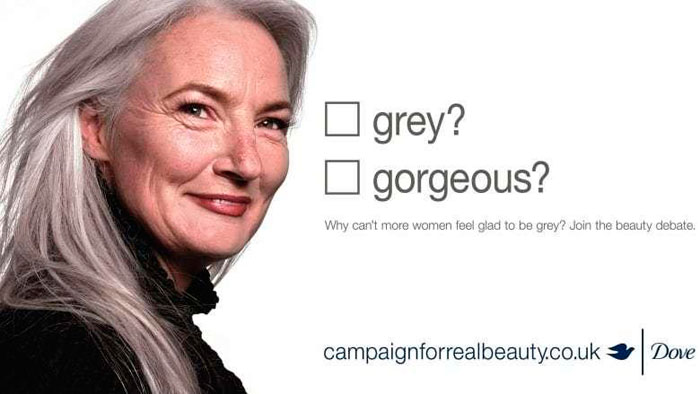
Image via CBC ©Dove
To really build a powerhouse brand using big-brand know-how you need to build out your brand strategy so you can compete effectively. There are 12 key areas in every strong brand strategy, some of which we’ve mentioned previously.
You can review the other elements in this diagram below and discover more here.
Brand Building Foundations and Strategy BEFORE Design, Communications or Marketing Activities | |
FIRST A brand must evaluate, identify, codify, map out and articulate what it stands for – to become highly visible, credible, trusted, and much liked so it can command a premium and give its customers a compelling reason to buy. The elements listed below are the roadmap for every brand because the outputs provide the direction for communications, design and marketing activities. | SECOND Design, visual content, text, campaigns and marketing activities are created to communicate the brand’s offering and attract its ideal customers to close the sale. The visual language expressing the brand in meaningful context can only be created once the factors that make it different, distinctive, memorable and likeable have been identified, codified and developed in stage one as listed. |
Purpose | Brand Naming / Taglines |
Vision | Visual identity |
Mission | Logo & Fonts |
Values | Signature Colour Palette |
Promise | Website/Social Platforms |
Positioning | Copywriting Style and Language |
Product / Service Structures | Content Development and Planning |
Purchaser Personas | Graphic Elements |
Personality | Photography / Illustration Style |
Story | Video Campaigns and Music Style |
Signature Language / Tone-of-Voice | Brand Collateral e.g. Packaging |
Brand Culture | Marketing Campaigns e.g. Advertising |
Customer Journey and Experience | Brand Sales Scripts |
Master Brand Profile Distillation | Brand Guide |
| Management Brand Induction & Leadership Development | Staff Brand Induction & Training, Brand Champion Training, Culture Development |
Questions to Consider
- Have you defined your target consumer profile clearly enough that you would know them if you met them in real life?
- How many product lines are in your range? What would happen if you cut a third of them? Have you structured your products/services so they’re easy to upsell and cross sell?
- How compelling is your brand story?
- Do you have Master Brand Guidelines to ensure your brand is deployed consistently from a brand strategy perspective coupled with marketing campaigns and design execution?
- Do you have a brand strategy and marketing strategy for the long-term and how well do you stick to it?
- When was the last time customer input influenced your brand? Better still, when did you last give you brand a health check?
Your Persona Client Satisfaction Guarantee
- When you work with us, we’ll create a customised brand building plan and strategy with clear investment for you tailored to your specific requirements and preferences
- You’ll know each step of your brand building journey before we start because we’ll discuss it, document it and agree on it with you before work commences
- You’ll have timelines, key milestones and deliverables to evaluate and approve for each stage and part of your brand building process
- Because we know the unexpected sometimes happens we can make adjustments along the way if you need it and if something extra is requested we’ll ensure you’re fully appraised about what that entails before committing
- As we achieve pre-agreed objectives you’ll be able to evaluate your brand building work and strategy in progress, coupled with the outcomes to ensure return on investment
Get in touch today because we’d love to get started helping you build your standout, powerhouse brand so you can increase your profits and leave your competitors way behind.
Email us [email protected] or ring us +35318322724 (GMT 9:00-17:30) and ask about our VIP Brand Strategy Discovery.



